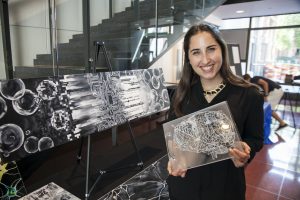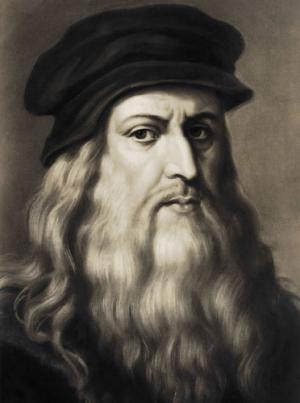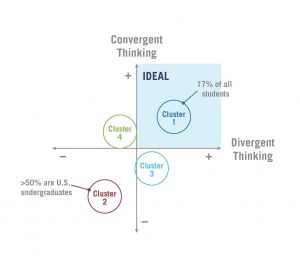
In high school, Rebecca Kellner (right) always had a dual love of art and science. When she entered the University of Pennsylvania as a freshman, she thought that her interest in art would always be separate from her pursuit of science. “I’ve always loved art and science and I wondered how I would integrate my passions into one area of study,” Rebecca says. “Then I heard about the Network Visualization Program run by Dr. Danielle Bassett . In this program, the intersection of art and science is celebrated, and this intersection is a place where I feel right at home.”
The Penn Network Visualization Program, begun in 2014, had long been a dream of Dr. Bassett. She wanted a forum where young artists and research scientists could interact with each other. “Science and art are often perceived to be at odds with each other, two fundamentally different ways of understanding the world. As a scientist, I’ve learned that the visual impact of the information I present is crucially important. Networks are visually intuitive,” says Bassett, “and represent an opportunity to foster a common language between scientists and artists.”
In this six-week summer program, young artists spend time with scientists at Penn who are performing cutting-edge research in network science as applied to social systems, human biology, and physical materials, with the underlying goal of advancing bioengineering. Faculty from the Warren Center for Network and Data Science who have volunteered their time and creativity to the project include Eleni Katifori, Erol Akcay, and Randy Kamien of the School of Arts and Sciences; Robert Ghrist and Victor Preciado of the School of Engineering and Applied Sciences; Sandra Gonzalez-Bailon of the Annenberg School of Communications; and Francis Diebold of the Wharton School of Business. During the course of the internship, the artists produce works of art interpreting and capturing the intricacies of these networks in novel ways. Artistic supervision and project advice are provided by local artists affiliated with the program. The goal of the internship is to provide scientists with new conceptualizations of their research and to provide the intern with new knowledge in scientific art applications.
Rebecca was thrilled when she was accepted into the program. During her internship she worked with a variety of scientists. Her final artwork focused on the research of Dr. Ann Hermundstad (Janelia), the postdoctoral researcher in the Physics of Living Matter Group, University of Pennsylvania Department of Physics and Astronomy. Dr. Hermundstad’s research focuses on what and how the brain sees. Fascinated by these networks, Rebecca created a painting and a laser-etched acrylic book.

The program also invites six high school students who have exhibited creativity and academic achievement. Nicholas Hanchak (right) from Westtown School participated during the summer of 2016. “I love art, science and baseball and I am thinking about architecture as a possible career,” Nicholas says. “The Penn program challenged me to find new ways to combine these interests.” For his final project, Nicholas created a Plinko Game Board showing the difference between the networks in a healthy brain and in a brain damaged by stroke.
“Artists and scientists are kindred spirits because they both are interested in observing what is in front of them,” says Dr. Bassett. “The Network Visualization program offers an opportunity for scientists and artists to inform each other in very tangible ways.”
The program runs every other summer. During the fall, several of the artists’ pieces are showcased in Philadelphia-area middle and high schools, particularly in disadvantaged areas. These efforts are enabled by ongoing collaborations with the Netter Center for Community Partnerships and Penn’s Center for Curiosity, and they are partially funded by the National Science Foundation. Bassett hopes this outreach effort will encourage children to explore intersections between the arts and sciences, while instilling a growing appreciation of their networked world.




